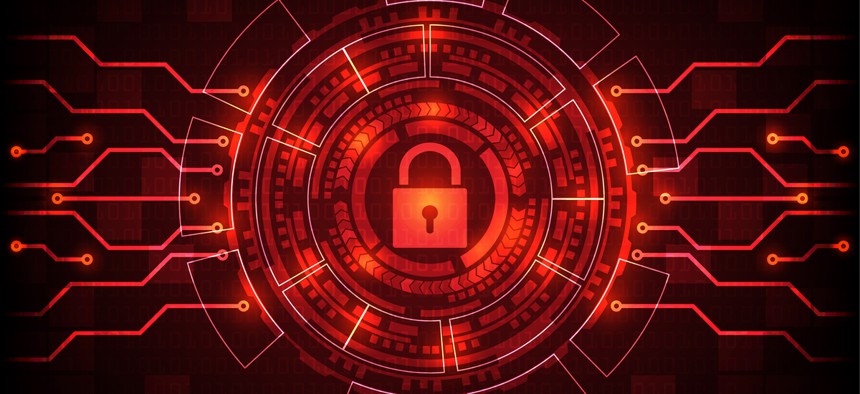What Government Employees Need to Know About Ransomware

Nicescene/Shutterstock.com
First, your employees are your front line.
Ransomware is a serious threat and attacks are on the rise, with government systems increasingly the target. Victims are frequently law enforcement agencies and school systems, attacks on which have heavily dominated headlines in 2019. From encrypted files to completely blocking access, attack strategies vary, and government employees must know how to prepare once early signs of an attack occur.
Public sector organizations—especially the many who rely on legacy infrastructure and tools—must face the harsh reality of cybersecurity and embrace a platform-centric approach that gives teams comprehensive visibility and protection to address a full range of security and operational needs. This is only possible with an effective security strategy and a strong commitment to well-documented cybersecurity best practices in order to avoid ransomware outbreaks and other stealthy attack methodologies.
It is vital that organizations adopt proactive prevention techniques focused on identifying behavior related to ransomware even when no signatures or known exploits are present. In this context, applying machine learning and behavioral analytics to detect and respond to known and unknown ransomware can improve the odds of stopping an initial infection from escalating.
The following best practices are recommended to help secure public sector organizations:
1. Employees are your front line. Employees should be well-versed on and held accountable to follow cybersecurity hygiene best practices including using strong passwords and secure Wi-Fi. Cybersecurity awareness training programs can help combat the threat of social engineering techniques. Have a reporting plan that ensures your staff knows where and how to report suspicious activity.
2. Use next-generation antivirus software that can look for indicators of attack and stop ransomware before it inflicts damage. CrowdStrike has found that organizations around the world are significantly underprepared. In fact, a recent survey of senior IT decision-makers found that American organizations, on average, take over 101 hours to detect, triage and contain a breach. This is more than four days working around the clock, or 12.5-plus working days, over three weeks. The most cyber-prepared organizations should be following the 1-10-60 benchmark: aim to detect an intrusion in under a minute, perform a full investigation in under 10 minutes, and eradicate the adversary in under an hour to effectively combat sophisticated cyber threats. Agencies that follow this rule are more likely to root out the adversary before the attack leaves its initial entry point, minimizing impact and escalation.
3. Keep operating systems and software patched and up to date. Adversaries exploit flaws to gain access to and compromise legacy systems. To prevent an attack, agencies must maintain a disciplined approach to patch management across all hardware, including mobile devices, operating systems, software and applications. Asset management and software inventory ensure an agency understands its own footprint and exposure; vulnerability and patch management verifies known vulnerabilities and identifies, prioritizes and remediates insecure configurations; and regular review of standard security controls allows organizations to remain proactive in their security stance to avoid malware and ransomware outbreaks.
4. Continuously monitor for malicious activity and indicators of attack. Endpoint detection and response, or EDR, behaves like a surveillance camera, capturing raw events for automatic detection of malicious activity not identified by prevention methods and providing comprehensive visibility for proactive threat hunting. The use of cloud-delivered EDR plus machine learning and next-generation antivirus expedites the ability to pinpoint threats while increasing visibility across the entire enterprise, staying ahead of threats and protecting data regardless of where it is stored.
5. Monitor systems in real time and keep up with the latest threat intelligence. As CrowdStrike’s survey indicates, in the past 12 months, 25% of American organizations admit they have been unable to prevent intruders from accessing their data, with 48% pointing to slow detection as the cause. Detection is the primary IT security focus for only 17% of American organizations, but 90% see one-minute detection as a cybersecurity “game-changer” for their organization. As such, agencies must prioritize the deployment of threat hunting teams, whether internal or via managed detection and response services. Implementing both the technology and the people to detect, investigate and remediate intrusions before adversaries can accomplish their objectives is critical. Leveraging a best-in-class threat intelligence service allows defenders to know and understand their adversary, providing operators with a more efficient way to identify threat vectors.
At the end of the day, government entities at all levels are at risk. From federal to state and local, no organization is immune to ransomware. Criminal actors have learned the value in targeting public sector agencies so the prioritization of strategies to combat ransomware is essential. Otherwise, you may as well step aside and invite attackers in, costing your agency time, money and ultimately putting your data and your mission in harm’s way.
James Yeager is vice president of public sector and healthcare for CrowdStrike.





